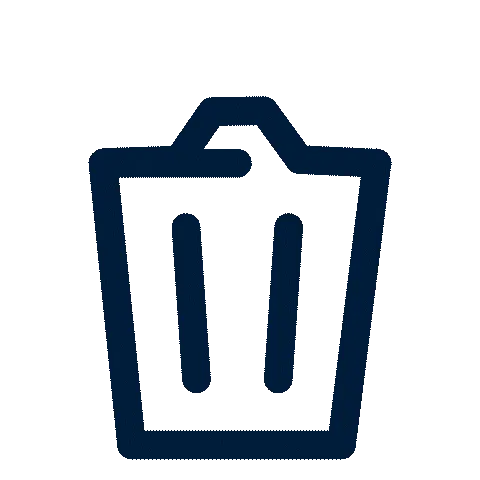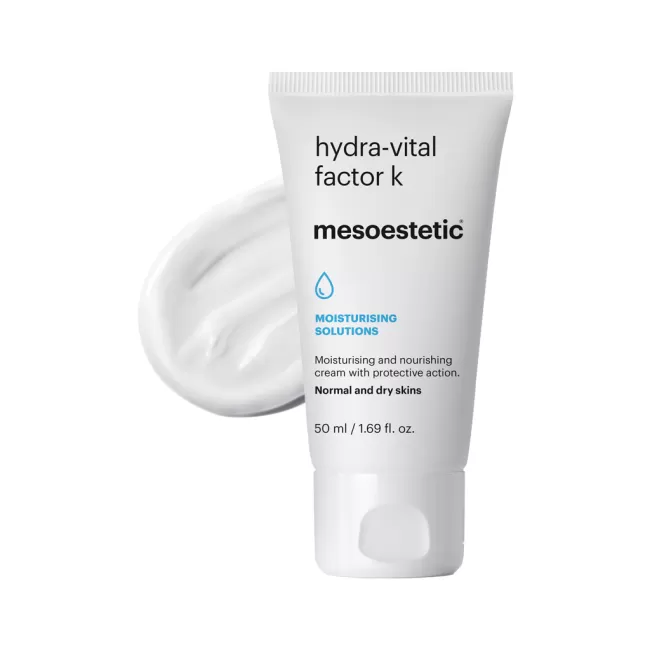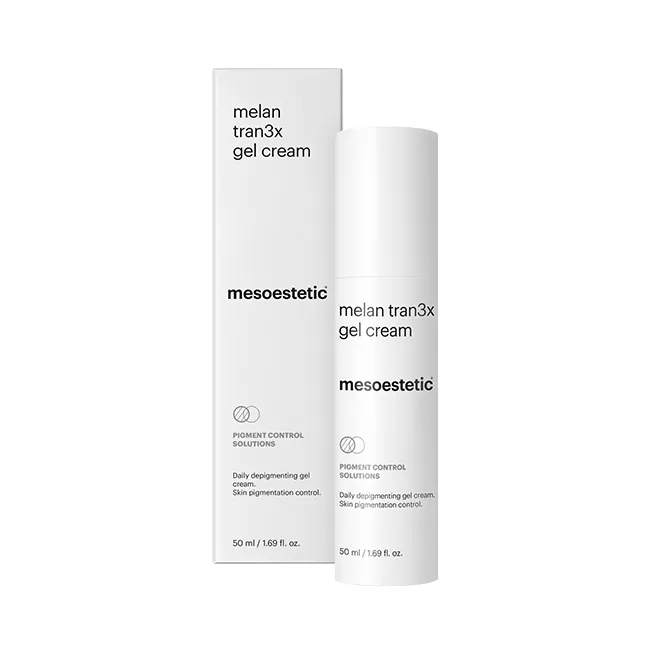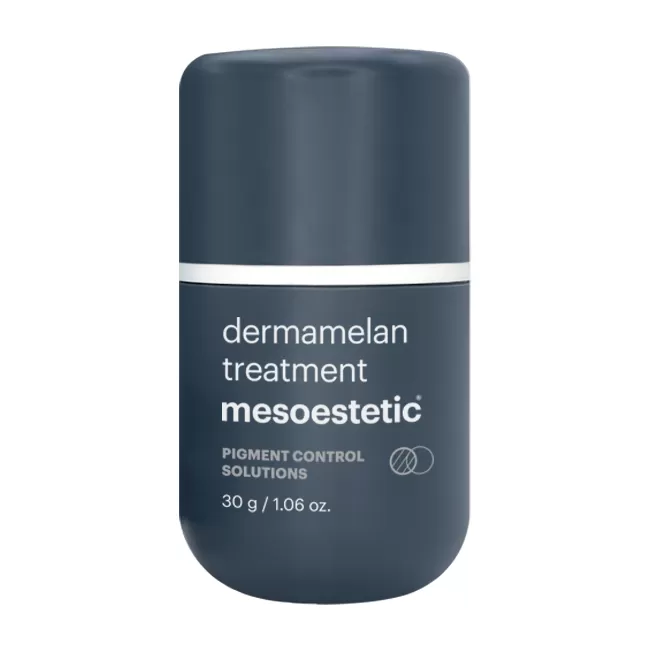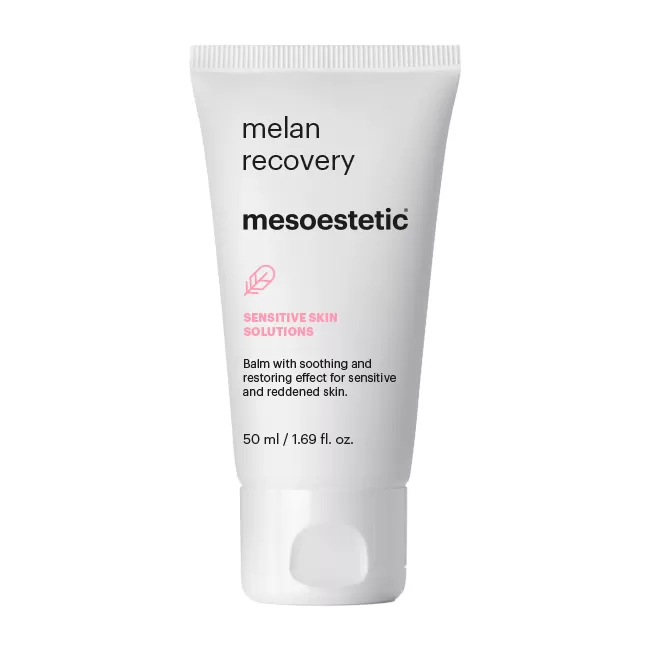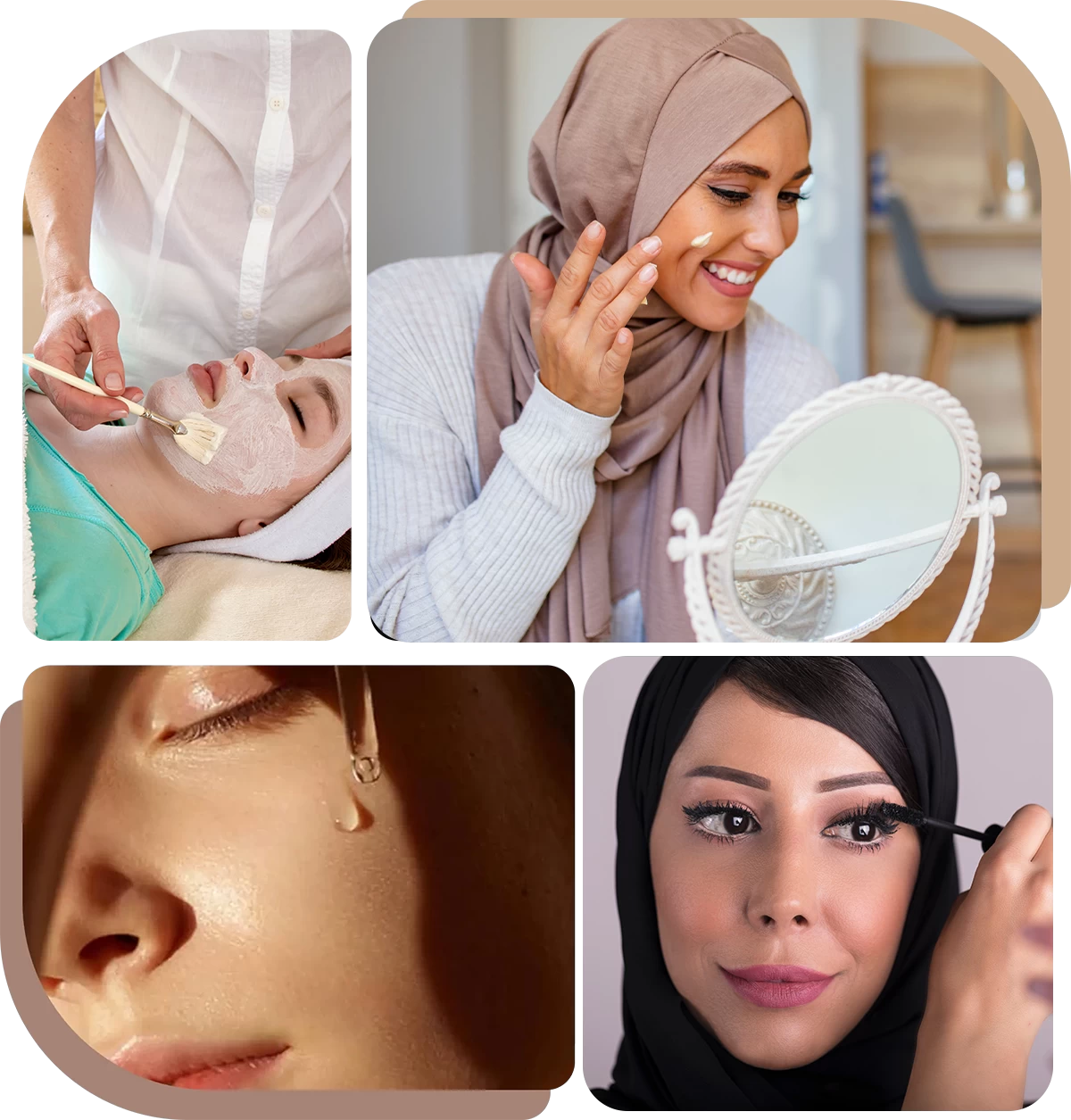
Who We Are
We Create Your journey towards elegance
Your unique journey into the world of beauty and distinction, expressing your personality through products that care for you and elegant touches. It's more than just an appearance; it's an experience that reflects your confidence and beauty in a renewed and distinctive style.
Sections
Shop by Category
our best - selling products
New Products
Enjoy with us the new products that care for your skin's freshness and health, and help you achieve
Radiant skin and exceptional freshness.

Latest News and Articles
show All News
The cold peeling method relies on the use of gentle chemical solutions applied to the skin with the aim of removing damaged cells and gradually renewing the skin without causing irritation or severe redness.This method is one of the latest skincare techniques, as it works to lighten pigmentation, unify skin tone, and stimulate collagen production.The cold peeling method is characterized by being safe and effective, and it can be applied to different skin types, including sensitive ones. With the correct medical guidelines before and after the session, this technique provides amazing results for smoother, clearer, and more radiant skin.In this article, we will talk about cold peeling and the method of performing it without causing any damage, also Hac products can help with that.
Definition of Cold Peeling
Cold peeling is a non-surgical cosmetic procedure aimed at rejuvenating the skin and improving its appearance by gently and safely removing the damaged surface layers.This type of peeling relies on light acid-based chemical solutions applied to the face to stimulate the process of cell renewal and collagen production without causing strong redness or irritation as in traditional peeling.Cold peeling is distinguished by its ability to treat pigmentation, dark spots, and unify skin tone, in addition to improving skin texture and increasing its freshness, making it an ideal choice for those seeking healthy and glowing skin without long recovery periods.To facilitate the cold peeling process, HAC products can be used, as they provide noticeable and effective results safely without causing any harm due to the effect of Hac cosmetics products
Learn About Cold Peeling
Preparing the Skin Before Cold Peeling
The cold peeling method begins with a basic step, which is preparing the skin well before the session to ensure the best results. In this stage, the doctor deeply cleanses the face to remove dirt, oils, and dead skin cells, which helps better absorption of the active peeling ingredients. It is also recommended to stop using any products containing acids or retinol several days before the session to avoid skin sensitivity.After cleansing, the face is gently dried, and the doctor may use a special solution to balance the skin’s pH level before applying the chemical mask.This preparatory step prepares the skin to receive the peel safely and effectively without any irritation.
Applying the Cold Peeling Solution on the Face
After preparing the skin for the cold peeling method, the doctor begins applying the cold peeling solution carefully to cover all facial areas evenly.This solution usually contains gentle acids and soothing ingredients that dissolve the damaged outer layers of the skin without causing a burning or strong heat sensation as in traditional chemical peels.The solution is left on the skin for a period ranging from 6 to 12 hours, depending on the skin type and the degree of pigmentation being treated.During this time, the active ingredients start stimulating cell renewal and reducing the production of melanin responsible for dark spots, which contributes to unifying the skin tone and making it brighter and smoother.
Removing the Mask and Immediate Post-Session Care
After the specified time has passed, the cold peeling solution is gently removed using lukewarm water or a mild cleanser, and the skin is patted dry without rubbing.At this stage, slight redness or dryness may be noticed, which is normal and temporary.The doctor then applies a soothing cream to moisturize the skin and reduce any possible irritation.It is important in the first few days after the session to avoid direct sun exposure and to use a high-protection sunscreen daily.Makeup or strong products should also be avoided for at least two days until the skin regains its natural balance and starts showing the peeling results gradually and clearly.
Home Care After Cold Peeling
The home care phase is an essential part of the cold peeling method, as it helps enhance results and maintain skin radiance.It is recommended to use the creams prescribed by the doctor, such as moisturizing and brightening creams containing soothing ingredients that aid in cell renewal and prevent new pigmentation.It is also preferable to continue avoiding sun exposure and to use sunscreen daily even after the peeling period ends.During this phase, the skin begins to renew itself, becoming softer and clearer, and the final results appear within a few weeks.Following the proper skincare routine ensures the success of the cold peeling process and maintains the skin’s glow for a long time.
What Are the Benefits of Cold Peeling?
Lightening the Skin and Unifying Its Tone
One of the most prominent benefits of the cold peeling method is its high ability to lighten the skin and unify its tone thanks to its effective ingredients that work on reducing melanin production, which is responsible for pigmentation.This procedure helps remove dark spots caused by sun exposure or acne scars, giving the skin a more radiant and even appearance.Cold peeling is gentle on the skin and does not cause strong redness or inflammation like other peeling types, making it an ideal choice for people with sensitive skin seeking visible results without unpleasant side effects.
Stimulating Collagen Production and Cell Renewal
Cold peeling helps stimulate blood circulation in the skin and encourages cells to produce collagen, the protein responsible for skin elasticity and youth.With regular sessions, the skin’s ability to renew itself increases, replacing damaged cells with new and healthy ones.This effect helps reduce the appearance of fine lines and early wrinkles, giving the face a smooth and firm texture.Collagen stimulation also improves the appearance of large pores and makes the skin plumper and more radiant. This benefit is one of the main reasons many people turn to cold peeling as a comprehensive cosmetic procedure for skincare.
Treating Pigmentation, Melasma, and Acne Marks
Among the benefits of the cold peeling method is that it serves as an effective treatment for deep pigmentation issues and melasma resulting from hormonal changes or prolonged sun exposure.It also helps reduce old acne marks and spots caused by skin inflammations.The gentle acidic components used in this type of peeling work to gradually break down pigmentation without damaging the skin, making it safe and suitable for all skin types.With adherence to the post-session care routine, clear improvement in skin clarity and tone can be noticed within a relatively short period.
Giving the Skin Smoothness and Radiance
Cold peeling contributes to removing dead cells and purifying pores from impurities, making the skin smoother and more luminous.After the session, the skin gains a silky texture and radiant appearance thanks to cell renewal and increased absorption of moisturizers and nutrients.This type of peeling also reduces the appearance of large pores and dullness, restoring the skin’s natural balance between hydration and oil secretion.Over time, regular sessions give the skin a healthy and vibrant look, making cold peeling one of the best options for achieving a natural and lasting glow without complex cosmetic procedures.
Frequently Asked Questions About the Cold Peeling Method
Does cold peeling suit all skin types?
Yes, cold peeling is considered one of the safe cosmetic procedures suitable for all skin types, including sensitive, oily, and dry skin. This is due to its gentle formula based on light acids and soothing ingredients that reduce the risk of irritation or inflammation.However, it is always recommended to consult a dermatologist before undergoing the session to determine the appropriate type and concentration of active ingredients according to each skin’s needs, ensuring the best results without side effects.
Does cold peeling cause pain or burning during application?
Cold peeling usually does not cause any pain or strong burning sensation as in traditional chemical peeling.Its formula is designed to be gentle on the skin, and the person may only feel slight tingling or mild warmth during the application, which is normal and temporary. If any discomfort occurs, the doctor can reduce the duration or adjust the concentration of ingredients according to skin sensitivity, making the session comfortable and safe in most cases.
In conclusion, the cold peeling method is considered one of the safest and most effective modern techniques for skin care and rejuvenation without unpleasant side effects. It gives the skin a natural glow and radiance, helping eliminate pigmentation and dark spots thanks to its gentle and soothing ingredients.It is also suitable for all skin types, including sensitive ones, making it an ideal choice for those who wish to improve their skin appearance in a medical and safe way.By following the instructions before and after the session, long-lasting results can be achieved, revealing the skin’s best clarity and brightness.

Have you ever noticed that your skin is no longer as radiant as it used to be? Or that dark spots suddenly appeared despite using your usual moisturizing creams? The truth is that pigmentation is not merely a cosmetic issue but an indicator that the skin needs deep care and effective medical products. Many women strive to discover the fastest way to remove pigmentation from the face and restore the skin’s natural purity. Pigmentation is considered one of the most common skin problems that affect facial clarity and take away its glow. With the development of modern skincare products such as Hac Cosmetics, treating pigmentation has become easier and faster than ever before.
In this article, we review together the effective ways to remove pigmentation, the factors that cause it, and the top products that help get rid of it quickly.
Secrets of Pigmentation Appearance and How the Problem Begins
The story usually begins when the skin secretes unbalanced amounts of melanin the pigment that gives the skin its natural color. With exposure to sunlight without protection or after skin inflammations, melanin starts to accumulate and appears as spots. Recent studies indicate that more than 65% of women over the age of twenty-five suffer from some form of skin pigmentation, whether caused by the sun or hormonal changes.
To apply the fastest way to remove pigmentation from the face, the root cause must first be understood. Here comes the role of Hac Cosmetics products, which rely on medical formulations that reduce melanin activity and restore the skin’s natural balance.
Smart Steps for Quick Results
Pigmentation removal is not a single step but a complete journey that requires a well-structured plan that includes:
Gentle daily cleansing that maintains skin balance
Regular exfoliation to remove dead cells and renew the skin
Using a spot-lightening cream such as Dermamelan Treatment by Hac Cosmetics
Daily moisturizing to protect the skin barrier
Research indicates that following such a comprehensive routine reduces spot intensity by up to 45% during the first four weeks making it the shortest path to the fastest way to remove pigmentation from the face.
Is Laser Really the Magic Solution?
Laser is not an instant cure, but it delivers wonderful results when used wisely. The technique works by breaking down melanin particles in the deep layers, allowing the skin to gradually renew itself. However, post-session care cannot be ignored since the skin becomes sensitive and irritated. Here, Melan Recovery from Hac Cosmetics is recommended a soothing balm that restores skin comfort and reduces redness by over 60% with regular use. Combining laser with therapeutic skincare products is the most reliable path toward fast and tangible results.
Natural Treatment Still Has Its Place
Despite scientific progress, nature remains a valuable source. Ingredients such as honey, aloe vera gel, and licorice extract have proven effective in reducing spots by 25% when used regularly. However, these solutions require patience and consistency and cannot be the fastest way to remove pigmentation from the face alone. Therefore, it’s best to combine them with advanced medical creams like Dermamelan Treatment for a perfect balance between nature and science.
The Power of Vitamin C and Its Effect on Skin
Vitamin C is the undisputed star among brightening ingredients. It works by inhibiting the enzyme tyrosinase responsible for melanin production. Studies have shown that using a Vitamin C serum with a 10% concentration reduces the appearance of spots by 30% within just one month. Including it in your daily routine makes the fastest way to remove pigmentation from the face even more effective, especially with Hac Cosmetics products containing antioxidants that preserve skin radiance and even tone.
Eliminating Acne Marks Completely
Old acne marks may remain as witnesses to your skin’s past battles. To get rid of them quickly, focus on ingredients like azelaic acid and lactic acid that stimulate cell renewal. Hac Cosmetics offers precise medical solutions that treat these marks deeply without irritating the skin. Recent studies confirm that regular use of products containing these acids can accelerate cell regeneration by 50%, making them one of the fastest ways to restore facial clarity.
Treating Melasma and Freckles with Professional Care
Melasma and freckles require dual care lightening and protection. Dermamelan Treatment has proven effective in reducing deep melasma within just 21 days, according to clinical reports from Hac Cosmetics laboratories. With the use of Melan Recovery to soothe the skin after sessions, you get amazing results without redness or dryness. This balance between treatment and restoration makes it the fastest way to remove pigmentation from the face permanently.
When Do Results Start to Appear?
Many women expect instant results, but skin needs time to renew itself. With a regular routine and effective products, results begin to appear after about two weeks and peak after six weeks. Women who committed to a complete treatment noticed visible lightening and smoother texture. Perseverance is the key to applying the fastest way to remove pigmentation from the face, as skin rewards patience and care with true and lasting radiance through consistent use of suitable products.
The Secret to Clear Skin Begins with Daily Habits
Maintaining clear skin does not depend only on cosmetics but is the result of integrated daily habits affecting skin health inside and out. The most important of these habits can be summarized as follows:
Adequate sleep helps the body regenerate cells and repair tissues, making skin more radiant.
Drinking water regularly maintains skin moisture and reduces dryness that causes dullness.
Balanced nutrition rich in vitamins A, E, and C provides antioxidants that combat pigmentation.
Continuous hydration using medical moisturizers such as Hydragel Intimate from Hac Cosmetics, which grants the skin elasticity and a silky feel with all-day hydration.
Routine daily care with gentle cleansing and regular exfoliation prevents dead cell buildup and boosts skin renewal.
These steps are not just habits but a lifestyle that clearly reflects on your skin. Skin that receives sufficient daily care becomes more resistant to external factors and stays fresh regardless of age. Over time, you’ll notice that these practices are indeed the fastest way to remove pigmentation from the face and maintain its natural clarity.
Gentle and Effective Solution for Pigmentation in Sensitive Areas
Caring for sensitive areas is no less important than facial skincare, as many women suffer from pigmentation in these regions that causes embarrassment. The solution lies in choosing a safe and effective medical product such as Dermamelan Intimate Gel from Hac Cosmetics, which contains an innovative formula to gently lighten the skin without causing irritation.
The gel works to gradually lighten the intimate area and inner thighs while maintaining the skin’s natural balance and deep hydration. For best results, follow these simple steps:
Use the gel daily after gentle cleansing.
Avoid using any scented or strong products in this area.
Make sure to wear cotton clothing that allows the skin to breathe.
In this way, you’ll achieve safe, natural lightening that boosts your confidence and makes your skincare complete from head to toe making the fastest way to remove pigmentation from the face an extension of your skin’s beauty in every detail of your body.
In Conclusion , The fastest way to remove pigmentation from the face is the one that combines deep understanding of the skin and continuous care. True beauty does not come from a single product but from a holistic lifestyle that starts with prevention and continues with treatment to maintain results. Always choose trusted medical products like Hac Cosmetics, which provide scientifically developed solutions based on research and expertise restoring your skin’s natural balance and true radiance. Remember, every moment you dedicate to skincare today is an investment in your beauty and confidence tomorrow.
Frequently Asked Questions
Can pigmentation be removed during pregnancy?
It’s preferable to avoid strong products or those containing high acids during pregnancy. You can rely on safe formulations such as the medical products from Hac Cosmetics, which soothe the skin and gradually reduce spots without side effects.
Does stress affect facial pigmentation?
Yes, stress increases the secretion of certain hormones that stimulate melanin production in the skin, leading to new spots or worsening existing ones. Therefore, maintaining mental calmness and good sleep is an essential part of any effective pigmentation removal plan.

The Benefits of Cold Peeling for the Face are many and varied, as it is considered one of the latest techniques used in the world of skincare. It is regarded as a gentle alternative to traditional chemical peeling, which may cause inflammation or redness for sensitive skin. This method relies on the use of medical formulations containing mild acids such as lactic acid and lipoic acid.It works to remove dead skin cells and renew cells without causing irritation. One of the most important Benefits of Cold Peeling for the Face is that it provides the skin with immediate radiance and reduces pigmentation and dark spots. It also helps unify skin tone and stimulates collagen production, which makes the skin more youthful and elastic.In addition, cold peeling contributes to reducing acne appearance and deeply cleans pores, giving you a healthy and glowing look. For this reason, it is considered one of the best options for those seeking clear and radiant skin without long recovery periods.
What is cold facial peeling?
Before talking about the Benefits of Cold Peeling for the Face, we must first define What is cold facial peeling?
Cold peeling is a non-surgical cosmetic procedure that aims to remove the damaged surface layer of the skin to reveal a new layer that is more radiant and youthful. This technique is distinguished by its deep effect, as it also works to activate the middle layer of the skin and stimulate it to produce larger amounts of collagen, which helps improve skin texture and reduce various skin problems.The concept of cold peeling is quite similar to the mechanism of carbon dioxide laser, but the main difference lies in the recovery period. While the laser requires a longer time to heal, cold peeling is characterized by rapid recovery while achieving similar results in skin lightening and renewal. It is worth mentioning that cold peeling is approved by the U.S. Food and Drug Administration (FDA) and is considered one of the safe and effective procedures suitable for both men and women, thanks to its ability to give the skin a more radiant and lively appearance without surgical intervention. To facilitate the process of Cold peeling for the face, Hac products can be used for fast and effective skin-safe results.
When to resort to cold peeling for the face?
Cold peeling is used to achieve a range of cosmetic and therapeutic goals that help improve the appearance of the skin and restore its glow, as this procedure effectively and safely treats several common skin problems.Among the most notable goals are reducing fine lines and wrinkles, as cold peeling helps soften their appearance without completely removing them, giving the face a more youthful and relaxed look. It also helps unify skin tone and reduce hyperpigmentation caused by sun exposure or hormonal changes.Among the Benefits of Cold Peeling for the Face also is minimizing large pores, especially for people with oily skin, in addition to stimulating collagen production that restores the skin’s elasticity and natural shine. It also helps lighten dark spots caused by sun damage or aging and reduces acne scars, leaving the skin clearer and more even.
What are the benefits of cold peeling for the face?
1. Skin lightening and improving radiance
One of the most prominent Benefits of Cold Peeling for the Face is that it helps lighten skin tone naturally and safely. It removes the damaged surface layers of the skin and reveals a new, more radiant layer. It also contributes to cell renewal and enhances blood circulation in the face, giving the skin a more vibrant and glowing appearance. Cold peeling is considered an ideal choice for those suffering from dull skin and loss of natural glow due to environmental factors and daily stress.
2. Reducing pigmentation and dark spots
Cold peeling effectively reduces pigmentation caused by sunlight or hormonal changes, which is one of the main Benefits of Cold Peeling for the Face that make it a preferred treatment for many men and women. It works to unify skin tone thanks to its gentle acid formula that renews cells deeply without irritating the skin, leading to the gradual fading of dark spots with each session.
3. Stimulating collagen production
Among the Benefits of Cold Peeling for the Face is that it enhances collagen production in the middle skin layers, making the skin more elastic and youthful. Collagen is the main element that maintains skin firmness and smoothness, and with aging, its production gradually decreases. Therefore, cold peeling stimulates cells to produce new amounts, reducing the appearance of wrinkles and fine lines and restoring a firmer, rejuvenated look to the face.
4. Minimizing pores and purifying the skin
Cold peeling helps deeply clean pores and reduce their size, giving the skin a smoother and clearer texture. This result is among the most important Benefits of Cold Peeling for the Face, especially for people with oily skin and large pores. Thanks to its light medical ingredients, cold peeling removes dirt and accumulated oils inside the pores and prevents blockage, which reduces the appearance of blackheads and acne.
5. Treating acne marks and scars
Getting rid of acne marks is one of the most prominentBenefits of Cold Peeling for the Face, as it exfoliates and renews the outer skin layer, making scars less visible over time. It also helps smooth the skin surface and make it more even, giving a healthy, flawless look.
Best products that help enhance the benefits of cold peeling for the face
The Dermamelan home pack from Hac cosmetics is considered the perfect extension of professional treatment, designed specifically to provide continuous and effective home care, giving you long-term results in reducing pigmentation and dark spots on the face.
This pack from Hac Cosmetics includes a set of specialized medical products that enhance the results of clinical treatment and support pigmentation removal safely and effectively. The home protocol includes:
Dermamelan Cream: To continue pigmentation treatment and prevent its recurrence
Melan Recovery: To soothe the skin and stimulate the healing process
Melan 130 Pigment Control: For strong sun protection and regulation of melanin
Production
Thanks to this advanced formula, the dermamelan home pack helps control hyperpigmentation and achieve visible, tangible results while reducing the likelihood of spots returning later.
Features:
Suitable for all skin types
Completely safe for sensitive skin
A key part of an internationally approved treatment protocol in over 90 countries
If you are looking for an effective and safe solution to reduce facial pigmentation and restore your skin’s glow and confidence, the Dermamelan home pack is your ideal choice.Start today a well-studied home treatment routine that gives you clearer, more balanced, and radiant skin.
Frequently asked questions about the benefits of cold peeling for the face
Does cold peeling suit all skin types?
Yes, one of the main Benefits of Cold Peeling for the Face is that it suits all skin types, including sensitive skin, because it depends on gentle formulations that do not cause irritation or severe peeling. However, it is recommended to consult a doctor before the session to determine the most suitable concentration for the skin.
How many sessions are needed to get results?
Usually, the results of Benefits of Cold Peeling for the Face begin to appear from the first session, but it is recommended to undergo several consecutive sessions (from 4 to 6 sessions) to achieve more stable and even skin tone results.
Are there side effects after cold peeling?
Cold peeling does not cause serious side effects; it is considered one of the safest procedures.Some slight redness or temporary dryness may appear after the session, which are natural symptoms that disappear within a few days.
In conclusion, the Benefits of Cold Peeling for the Face make it an ideal choice for everyone seeking fresher and healthier skin without the need for surgical procedures or long recovery periods. It helps lighten the skin, reduce pigmentation, and stimulate collagen production, giving the face a radiant and youthful appearance. It also contributes to purifying pores and treating acne marks and scars effectively and safely.Thanks to its quick results and gentle effect, cold peeling has become one of the most popular and successful cosmetic solutions, especially for those looking for a balance between natural beauty and advanced medical skincare.
